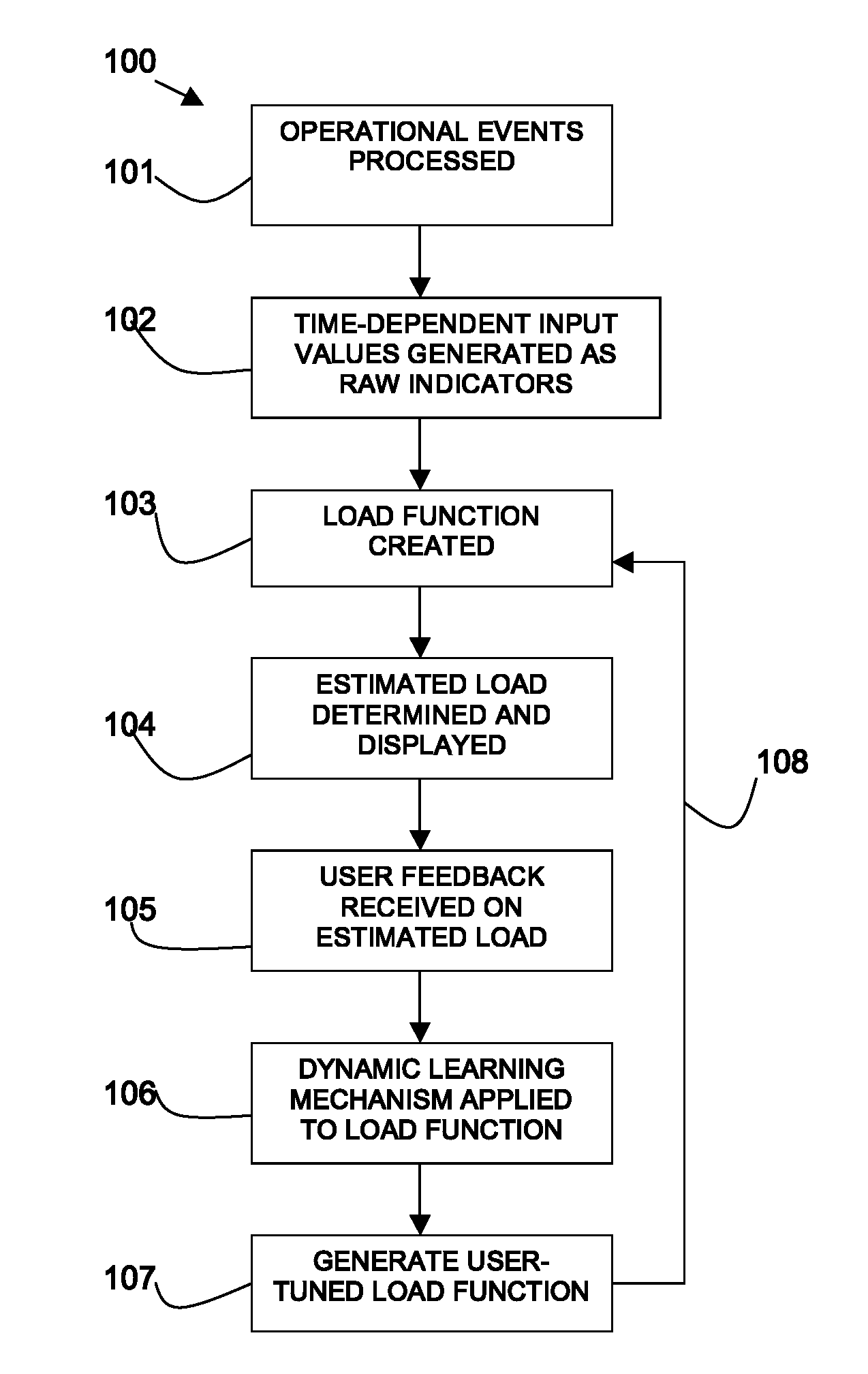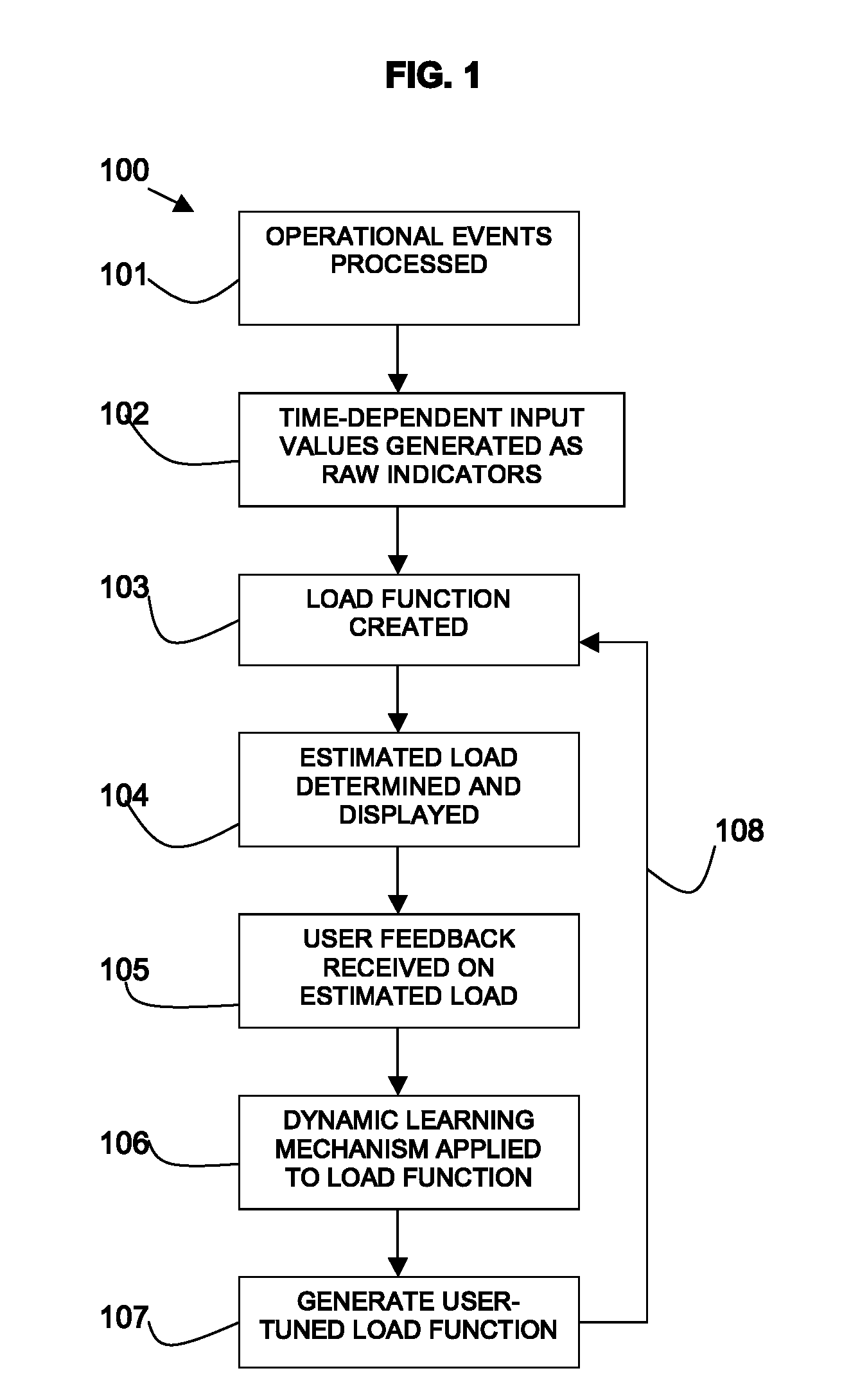Load estimation in user-based environments
a user-based environment and load estimation technology, applied in the field of load estimation in user-based environments, can solve the problems of increasing the burden on healthcare providers, the difficulty of developing methods and approaches to reduce operational load, and the increasing importance of healthcare services
- Summary
- Abstract
- Description
- Claims
- Application Information
AI Technical Summary
Benefits of technology
Problems solved by technology
Method used
Image
Examples
first embodiment
Artificial Neural Networks—Theoretical Background
[0050]Artificial neural networks are mathematical representations of complex mathematical functions. They are composed of units named perceptrons, and arranged as a multilayered feed-forward network, in which the outputs of one layer are the inputs of the next layer. This type of learning machine was inspired by the brain structure. These machines are successfully used in many applications, such as pattern classification, dimensionality reduction, and function approximation. Because of the origins of the machines' design, the nodes in such networks are often called neurons. The machines' greatest advantage is their simplicity in both representation and learning. In addition, the number of required training examples (that is relative to the network structure) is not high compared to other machine learning solutions.
[0051]Referring to FIG. 2A, a diagram of a perceptron 200 is provided. Each perceptron 200 is composed of n inputs, x1, x2...
second embodiment
Linear Regression Mechanism
[0085]Another example of a machine learning mechanism that may be used in the described method and system is a linear regression mechanism.
[0086]First, similar to the previous (ANN) solution, one should define all the input load indicators relevant to the environment. Further on, all such indicators are treated as x=(x1 . . . xp), where p is the number of indicators.
[0087]Second, load ranks are defined relevant to the situations in the environment. It can be: “Low”, “Below Average”, “Average”, “Above Average”, “High” or other granularity.
[0088]The vector of weights β=(β1 . . . βp) will be calculated from the input data according to the feedback from the specific user.
[0089]Third, user will provide a set of rankings for several (N) situations, i.e. a rank score (r) for each situation (x).
[0090]Then, the following optimization problem will be solved:
minβ1…βp{∑i=1Nɛi2}s.t.ri=β1xi1+…+βpxip+ɛi
[0091]This will give us the set of weights β=(β1 . . . βp) describing...
PUM
 Login to View More
Login to View More Abstract
Description
Claims
Application Information
 Login to View More
Login to View More - R&D
- Intellectual Property
- Life Sciences
- Materials
- Tech Scout
- Unparalleled Data Quality
- Higher Quality Content
- 60% Fewer Hallucinations
Browse by: Latest US Patents, China's latest patents, Technical Efficacy Thesaurus, Application Domain, Technology Topic, Popular Technical Reports.
© 2025 PatSnap. All rights reserved.Legal|Privacy policy|Modern Slavery Act Transparency Statement|Sitemap|About US| Contact US: help@patsnap.com



